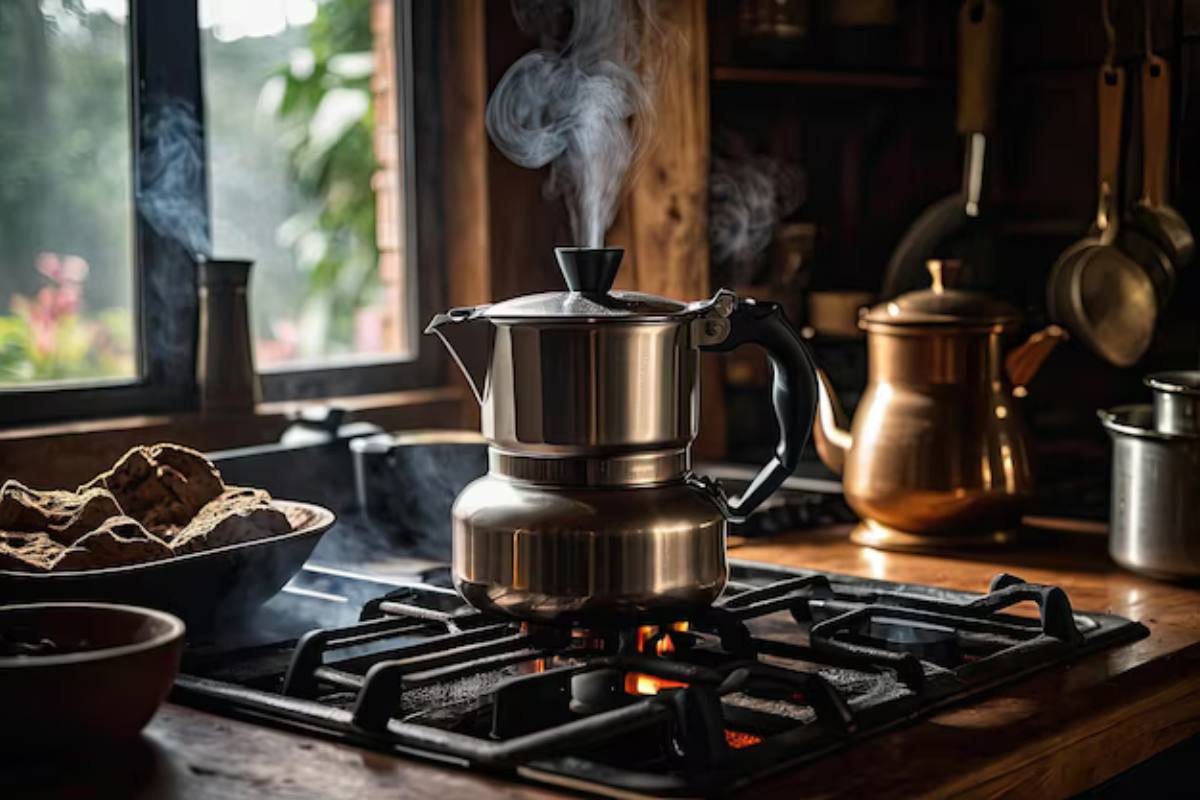The Moka Pot, also known as the stovetop espresso maker, is an iconic brewing device beloved worldwide for its ability to produce rich, strong coffee without the need for expensive espresso machines. Invented in Italy in 1933 by Alfonso Bialetti, the Moka Pot has become a staple in millions of households, especially in Europe and Latin America.
What Is a Moka Pot?
A Moka Pot is a three-chambered stovetop coffee maker. It uses pressure generated by boiling water to force steam through coffee grounds, producing a concentrated, espresso-like brew. While not technically espresso (which requires higher pressure), it offers a strong, bold coffee that is full-bodied and aromatic.
Why Brew Coffee with a Moka Pot?
- Affordable: A fraction of the cost of espresso machines.
- Durable: Made from aluminum or stainless steel, built to last decades.
- Rich flavor: Stronger than drip coffee, but smoother than espresso.
- Simple to use: Requires no electricity, just a stove or heat source.
- Portable: Ideal for home, camping, or travel.
Components of a Moka Pot
- Bottom Chamber: Holds water.
- Filter Basket: Holds ground coffee.
- Top Chamber: Collects the brewed coffee.
Step-by-Step Guide to Brewing with a Moka Pot
Step 1: Fill the Bottom Chamber with Water
- Fill to the valve line, not above it. Use hot water for better results and faster brewing.
Step 2: Add Coffee to the Filter Basket
- Use a medium-fine grind, finer than drip but coarser than espresso.
- Level the grounds but do not tamp — tamping increases pressure unnecessarily.
Step 3: Assemble the Moka Pot
- Place the filter basket into the bottom chamber.
- Screw the top on firmly but not overly tight.
Step 4: Heat the Moka Pot
- Place it on a medium heat source.
- Leave the lid open to monitor the brewing process if desired.
Step 5: Watch the Extraction
- Coffee will start gurgling up into the top chamber.
- Remove the pot from heat once the top is about 80% full, before it starts sputtering loudly — this prevents over-extraction and bitterness.
Step 6: Serve and Enjoy
- Stir the coffee in the top chamber to mix flavors evenly.
- Serve in espresso cups or add water/milk as preferred.
Common Mistakes to Avoid
- Tamping the coffee: Unlike espresso, you don’t tamp in a Moka Pot.
- Using high heat: Can burn the coffee, leading to bitter flavors.
- Overfilling with water: Covering the safety valve can be dangerous.
- Grinding too fine: Can clog the filter and increase pressure dangerously.
How Does Moka Pot Coffee Taste?
- Rich, bold, and strong.
- Less crema than espresso but more body than drip coffee.
- Notes of chocolate, nuts, and caramel are common.
Perfect Coffee-to-Water Ratio
A standard Moka Pot recipe generally uses:
- 1 gram of coffee for every 10 grams of water (example: 20g coffee for 200g water).
However, the design of the Moka Pot somewhat determines the amount used — it typically brews best when filled to capacity.
Tips for a Better Brew
- Use filtered water for cleaner flavor.
- Preheat water to reduce brewing time and avoid burnt flavors.
- Clean thoroughly after each use, especially removing coffee oils from the rubber gasket and filter screen.
Pairing Moka Coffee with Milk
Moka coffee is perfect for making milk-based drinks at home like:
- Café Latte
- Flat White
- Macchiato
Simply heat and froth milk manually or with a frother and add it to your Moka coffee.
Conclusion: The Beauty of Simplicity
The Moka Pot remains one of the most beloved brewing methods for a reason. Affordable, reliable, and capable of producing a strong, satisfying cup, it bridges the gap between espresso and drip coffee. Whether you prefer your coffee black or with milk, mastering the Moka Pot is a rewarding step in any coffee lover’s journey.
